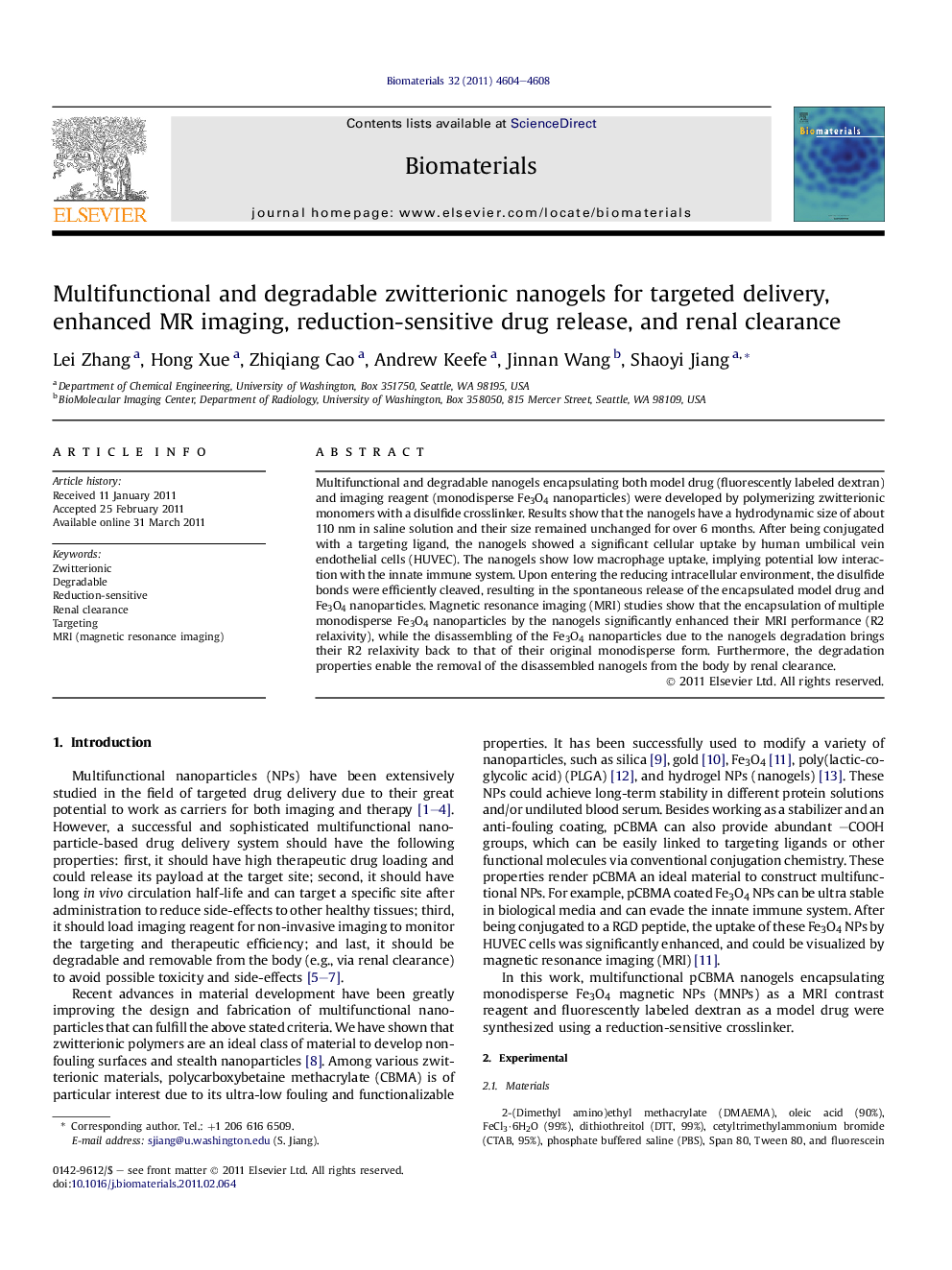| Article ID | Journal | Published Year | Pages | File Type |
|---|---|---|---|---|
| 7693 | Biomaterials | 2011 | 5 Pages |
Multifunctional and degradable nanogels encapsulating both model drug (fluorescently labeled dextran) and imaging reagent (monodisperse Fe3O4 nanoparticles) were developed by polymerizing zwitterionic monomers with a disulfide crosslinker. Results show that the nanogels have a hydrodynamic size of about 110 nm in saline solution and their size remained unchanged for over 6 months. After being conjugated with a targeting ligand, the nanogels showed a significant cellular uptake by human umbilical vein endothelial cells (HUVEC). The nanogels show low macrophage uptake, implying potential low interaction with the innate immune system. Upon entering the reducing intracellular environment, the disulfide bonds were efficiently cleaved, resulting in the spontaneous release of the encapsulated model drug and Fe3O4 nanoparticles. Magnetic resonance imaging (MRI) studies show that the encapsulation of multiple monodisperse Fe3O4 nanoparticles by the nanogels significantly enhanced their MRI performance (R2 relaxivity), while the disassembling of the Fe3O4 nanoparticles due to the nanogels degradation brings their R2 relaxivity back to that of their original monodisperse form. Furthermore, the degradation properties enable the removal of the disassembled nanogels from the body by renal clearance.
